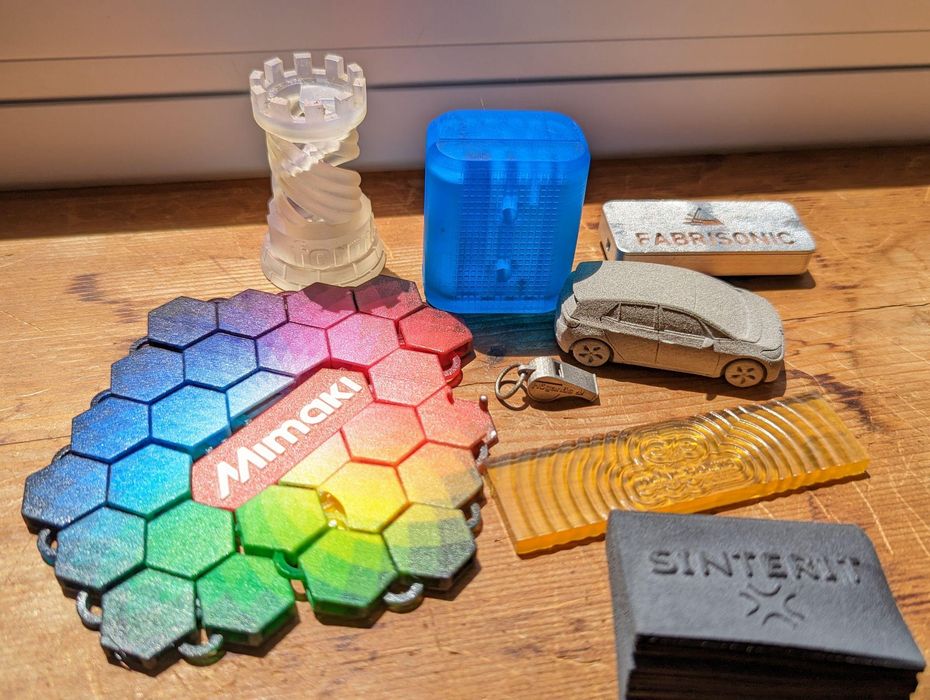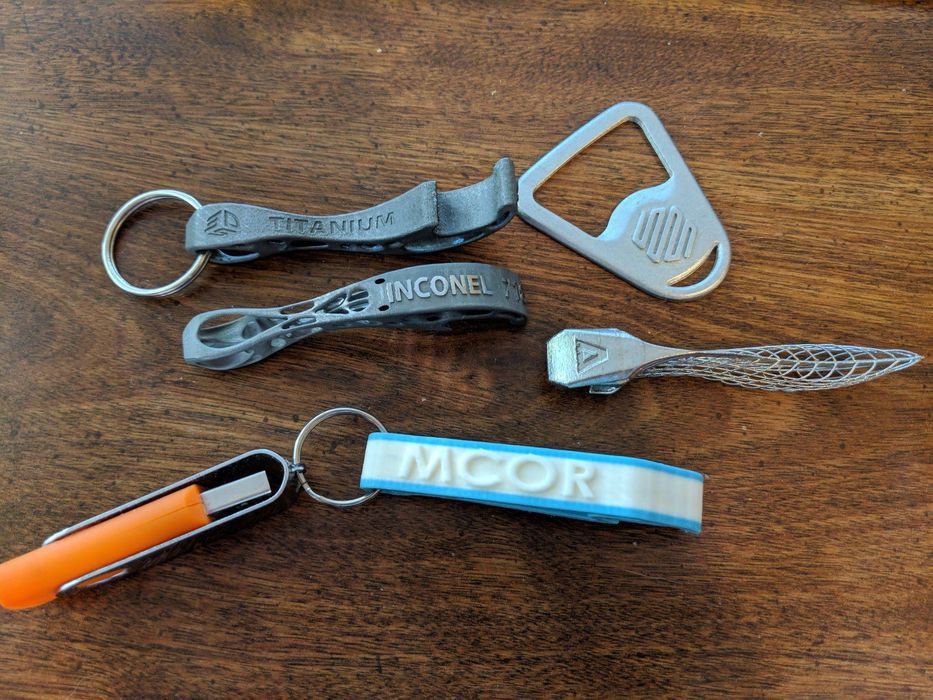
How to balance speed, cost, and impact to leave a lasting impression at your next industry event.
For an industry predicated on the concept of a digital warehouse, additive manufacturing (AM) still loves having stuff around. Within the context of trade shows and event exhibitions, that stuff translates to swag.
Giveaways, trinkets, functional parts, and other demo parts are all made from various materials on 3D printers for your booth visitors to take back home with them as both a reminder of your brand and a hands-on proof-of-concept.
Given the popularity and ubiquity of swag, companies spend a good amount of time and resources on ideating and producing those takeaways. Balancing speed, cost, and the impact of additively manufactured promotional items is an interesting challenge.
3D Printed Swag
Swag – promotional goods or items – takes on a number of forms in the AM world. As trade shows bring together the businesses offering supplies and services to potential customers and partners, the ability to go hands-on is vital. There’s nothing quite like actually holding a 3D-printed part and seeing for yourself whether it holds up to marketing images or videos. 3D-printed swag allows visitors to check the surface finish as well as the feel of the 3D-printed material.
It also helps if those hands-on items fall into another category: it helps if they’re cool.
There’s a fine balance between a cool-looking part that demonstrates the complexity and benefits of 3D printing with the differentiators of a given material/process/application – while still being something attendees want to take home with them.
One of the most popular choices for 3D-printed swag these days is a bottle opener.

Bottle openers are small (most fit within a 3D printer build volumes), familiar (no confusion about what a part is), useful (has a known and common application), and functional (must perform a repetitive task). A side benefit is that the more frequently these parts appear at different booths, the more different designs can be compared, offering a direct opportunity for especially fantastic models to stand out in the crowd.
Other popular designs for 3D-printed swag include:
- Lattice structures, often cubes, which frequently demonstrate tensile strength and flexibility
- 3D-printed business cards, which offer the immediate impact of offering contact information with a tactile reminder
- Whistles, which can be tiny or huge, and may include internal features, such as balls, to showcase part reduction and complexity
- Fidget parts, highlighting manipulability and design complexity; fidget spinners and cubes are especially popular
- Rings, pins, earrings, and other wearables, which double as valuable and mobile advertising
- Miniature versions of showcase parts (e.g., prototype shoes, phone cases, threaded screws)
- Fun pop culture references (you’ll see many an Iron Throne at any event, either full-sized for photo ops or handheld to showcase detail
- Chess pieces, especially rooks, and especially with internal features
- Multiples of the same design – often a functional tool, company mascot, or cultural icon – in different material choices offered as a set
- Collectibles of a similar design updated for each event
Read the rest of this story at ENGINEERING.com
